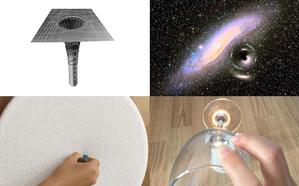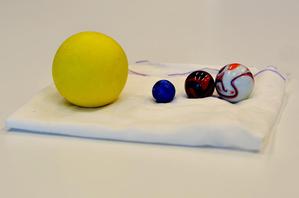Loading...
Related Activities
Hunting for black holes
astroEDU educational activity (links to astroEDU website) Description: How do astronomers detect invisible black holes?License: CC-BY-4.0 Creative Commons نَسب المُصنَّف 4.0 دولي (CC BY 4.0) icons
Tags: Model , Experiment Age Ranges: 12-14 Education Level: Informal , Middle School Areas of Learning: Modelling , Observation based , Problem-solving , Social Research Costs: Low Cost Duration: 45 mins Group Size: Group Skills: Constructing explanations , Developing and using modelsWhat is a black hole?
astroEDU educational activity (links to astroEDU website) Description: What are black holes and what would happen if the Sun was replaced by one of them?License: CC-BY-4.0 Creative Commons نَسب المُصنَّف 4.0 دولي (CC BY 4.0) icons
Tags: Model , Experiment , Investigation Age Ranges: 12-14 Education Level: Informal , Middle School Areas of Learning: Discussion Groups , Interactive Lecture , Modelling , Observation based , Problem-solving , Social Research Costs: Low Cost Duration: 45 mins Group Size: Group Skills: Constructing explanations , Developing and using models , Engaging in argument from evidence , Planning and carrying out investigationsModel of a Black Hole
astroEDU educational activity (links to astroEDU website) Description: Understand the mystery of black holes through a hands-on activity.License: CC-BY-4.0 Creative Commons نَسب المُصنَّف 4.0 دولي (CC BY 4.0) icons
Tags: Hands-on , Model , Interactive , Space-time , Black holes Age Ranges: 8-10 , 10-12 Education Level: Primary , Secondary Areas of Learning: Modelling , Social Research Costs: Medium Cost Duration: 1 hour Group Size: Group Skills: Asking questions , Developing and using models










